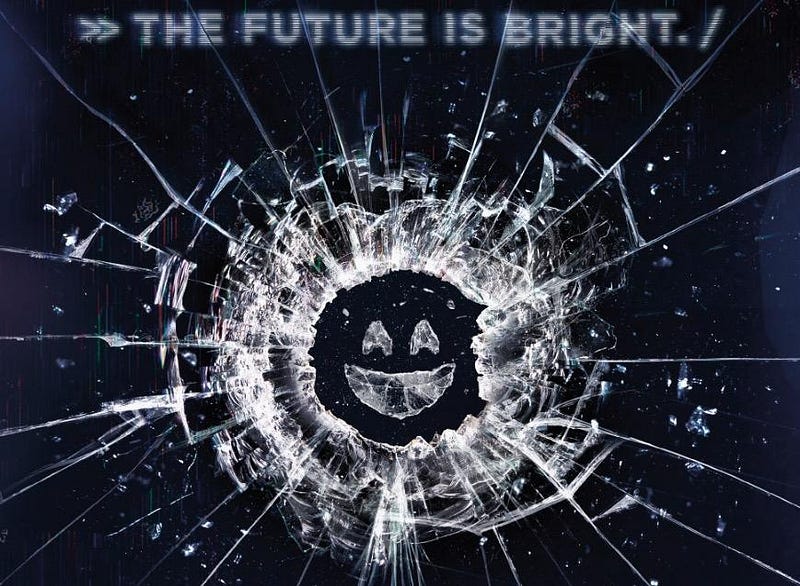
In social environments the “first space” is characterised as the home. The “second space” is the office. The “third space” is the social surroundings separate the first and second spaces. Examples of third spaces are coffee shops, public spaces, or parks. The first time I had heard of the third space was when I read the story of Starbucks and how the Starbucks’ vision was to be the “go-to” third space.
Three things occurred that got me asking myself, apart from the afterlife (let’s not get into that debate) is there really a possibility of a 4th space?

The 1st was the excellent series Black Mirror, by Charlie Brooker (who first worked as a writer and cartoonist for the great Oink! comic by the way, I still have a few copies in my attic). In the 4th episode of the 3rd series entitled “San Junipero”, San Junipero is a simulated reality in which the minds of the dead or dying can be uploaded to live as alternative versions of their younger selves forever; and which the living can visit for up to five hours per week.
The 2nd is the great Elon Musk’s ‘Neuralink’, a venture to merge the human brain with AI. About the venture Musk says: “Over time I think we will probably see a closer merger of biological intelligence and digital intelligence.” He added that “it’s mostly about the bandwidth, the speed of the connection between your brain and the digital version of yourself, particularly output.”
In a world where Moore’s law and exponential growth are so prevalent, soon the bandwidth and technological challenges will no longer be an issue. In that world Musk is correct in that “latency” will improve and the real issue will be a societal one.

The 3rd (while yes it is science fiction) was that I recently saw the great movie “Ghost in The Shell”. In it the hero has her brain inputted to a robotic body capable of feats no human is.
A final one is the movie “Transcendence” with Jonny Depp, where he uploads his mind to cyberspace and can manifest himself in many ways.
The Fourth Space
So, here is this week’s Thursday thought. In that world, which is getting closer and closer, are those who cryogenically froze their loved one’s bodies or even themselves the wise ones? Could we upload our minds to cyberspace? Would we want to? Do we want the option to do so? In a world of cosmetic surgery and body hacking is this the next step?
On this week’s innovation show we do the first interview in a 2nd/3rd space called meetingroom.io with CEO and co-founders Jonny Cosgrove and Dr. Abraham Campbell. It got me thinking how VR goes way beyond the option of a 3rd space of gaming or hanging out with a mate who lives in Australia watching Black Mirror.
Let’s now look at an example of VR in each of the spaces.
VR in the First Space
The first space is the home. Recently, we had Ai and AGI author and expert Calum Chace on the show and we talked about his book Economic Singularity and the world of UBI (Universal Basic Income). The main premise is that automation and Ai has taken over the majority of thinking jobs as well as physical and manual ones and the world’s income comes from a few major corporations. These major corporations pay a UBI for those who are now unemployed because of singularity.
In the 1930s British Economist John Maynard-Keynes said: “We are being afflicted with a new disease of which some readers may not yet have heard the name, but of which they will hear a great deal in the years to come — namely technological unemployment. This means unemployment due to our discovery of means of economising the use of labour outrunning the pace at which we can find new uses for labour.”
We are rapidly moving towards this reality, but what do we do in that instance?
Do we all spend our time in the gym, practicing mindfulness and lounging in coffee shops like modern day aristocrats? How do we find fulfillment and meaning in our lives?
The utopian view is that we all live a life of joy and abundance and the machines do all the work. If that is the case, VR may become an escape for people, because such “inactivity” can quickly become tiresome.
So, does VR shift from a 3rd space use to a 1st space one, mainly to provide escapism?
VR in the Second Space
Well, this use case is already well established. For example meetingroom.io is a VR meeting room for enterprise and one I used to interview the co-founders on the innovation show. The uses here are immense and will not only disrupt direct, well established competitors, but also have consequential disruption to business air travel, to hotels and conferences.
VR in the Third Space
This is an interesting one. Already VR is in widespread use in the 3rd space. Playstation VR, Hive, even Netflix has a VR cinema in which you can watch Netflix in a luxurious setting even if you are slumming it on a Ryanair flight :).
A good way to finish this Thursday Thought is with a quote by Charlie Brooker on his series Black Mirror.
“If technology is a drug — and it does feel like a drug — then what, precisely, are the side effects?” — Charlie Brooker
On this week’s innovation show we talk with co-founders of meetingroom.io Jonny Cosgrove and Dr. Abraham Campbell. We do the show in a VR meeting room and discuss the advantages and advancement of VR.
We talk to CEO and Founder of OCREX and AutoEntry about his journey from start out in a recession to the brink of abundance. Brendan Woods is CEO and founder and is currently seeking funding to grow the business in Canada and the USA.
The show is broadcast on RTÉ Radio 1 extra 3 times weekly and on iTunes, TuneIn and and Google play. Website is here and below is Soundcloud .